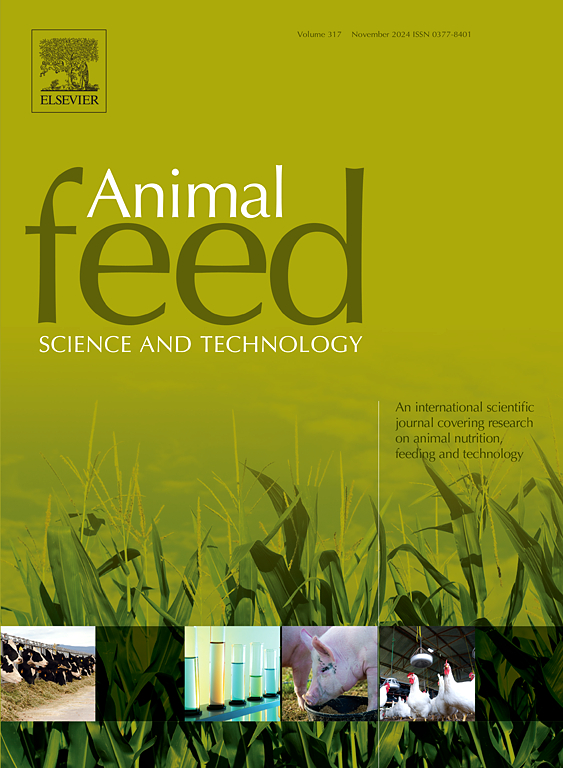Early post-natal methionine supplementation in ewe lambs: Long-term effects on feed efficiency, milk yield and fatty acid profile, metabolism, gut microbiome, and epigenetic regulation
IF 2.5
2区 农林科学
Q1 AGRICULTURE, DAIRY & ANIMAL SCIENCE
引用次数: 0
Abstract
Nutritional strategies that supply methyl donors, such as methionine in the early post-natal period of lambs could program feed efficiency, milk production and metabolism along the whole life due to persistent changes in epigenetic marks. To test this hypothesis, 34 newborn ewe lambs from the same flock were stratified and distributed into two groups with equal body weight distribution. The control group (F0-CTRL, n = 17) was fed ad libitum with a milk replacer. In contrast, the second group (F0-MET, n = 17) received the same milk replacer supplemented with 1 g methionine/kg DM. After weaning, all animals were raised the same way and fed ad libitum with a complete pelleted diet formulated according to nutrient requirements. At 45 days of age, blood was collected from the jugular vein for DNA isolation, and DNA methylation was analyzed by Reduced Representation Bisulfite Sequencing (RRBS) in ten animals [5 ewe lambs (F0-MET) vs. 5 ewe lambs (F0-CTRL), corresponding to 5 twin births, of which one lamb was assigned to each group]. The main results show that CPT1B, a gene involved in fatty acid catabolism, was differentially methylated in F0-MET lambs (45 days of life). In addition, these animals presented increased insulin and non-esterified fatty acid concentrations while cholesterol levels were reduced, most of these changes being persistent along the whole life. No differences were observed in milk production and feed efficiency during lactation. Still, the milk's fatty acid (FA) profile showed increased levels of long-chain fatty acids, n3 and n6 polyunsaturated fatty acids. All these results suggest that methionine supplementation in early life can modify ewes' milk fatty acid profile without compromising feed efficiency. However, it is necessary to clarify whether this effect is passed on to the offspring (F1) through epigenetic marks in the germline.
求助全文
约1分钟内获得全文
求助全文
来源期刊

Animal Feed Science and Technology
农林科学-奶制品与动物科学
CiteScore
6.00
自引率
6.20%
发文量
266
审稿时长
3 months
期刊介绍:
Animal Feed Science and Technology is a unique journal publishing scientific papers of international interest focusing on animal feeds and their feeding.
Papers describing research on feed for ruminants and non-ruminants, including poultry, horses, companion animals and aquatic animals, are welcome.
The journal covers the following areas:
Nutritive value of feeds (e.g., assessment, improvement)
Methods of conserving and processing feeds that affect their nutritional value
Agronomic and climatic factors influencing the nutritive value of feeds
Utilization of feeds and the improvement of such
Metabolic, production, reproduction and health responses, as well as potential environmental impacts, of diet inputs and feed technologies (e.g., feeds, feed additives, feed components, mycotoxins)
Mathematical models relating directly to animal-feed interactions
Analytical and experimental methods for feed evaluation
Environmental impacts of feed technologies in animal production.
 求助内容:
求助内容: 应助结果提醒方式:
应助结果提醒方式:


